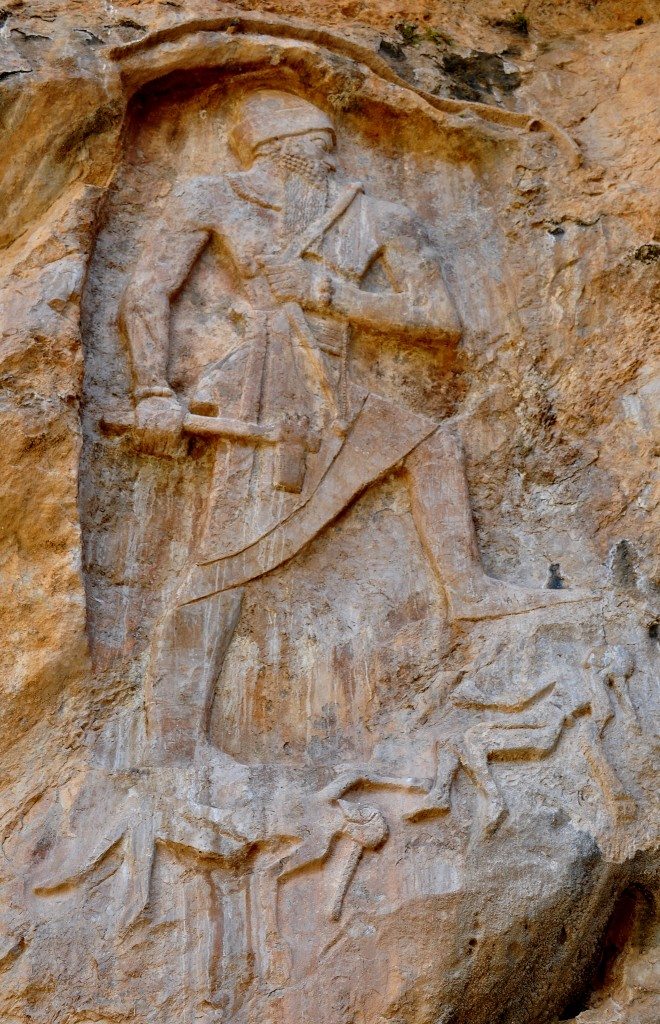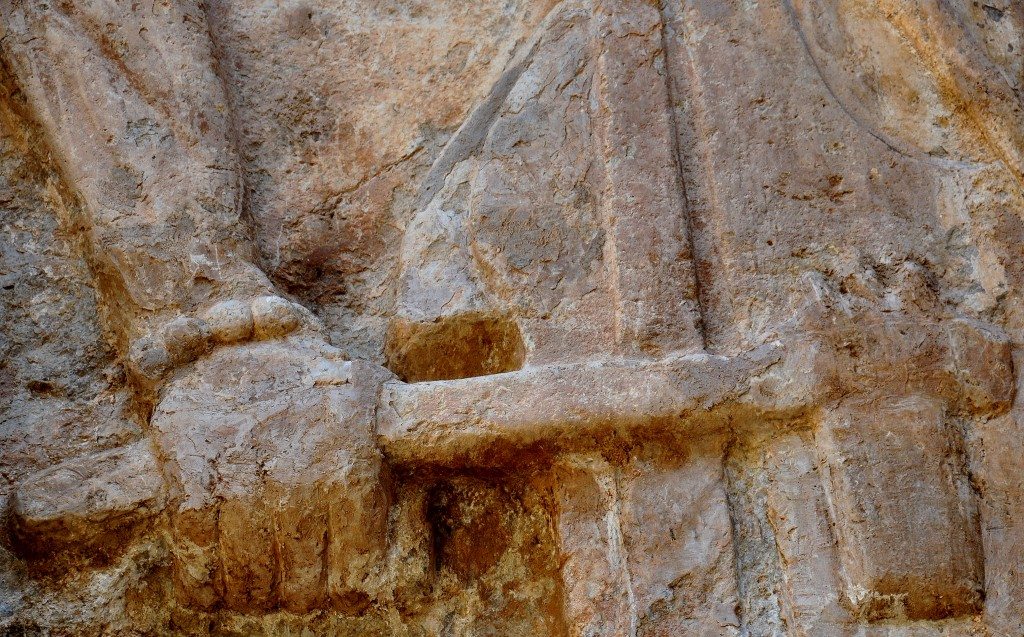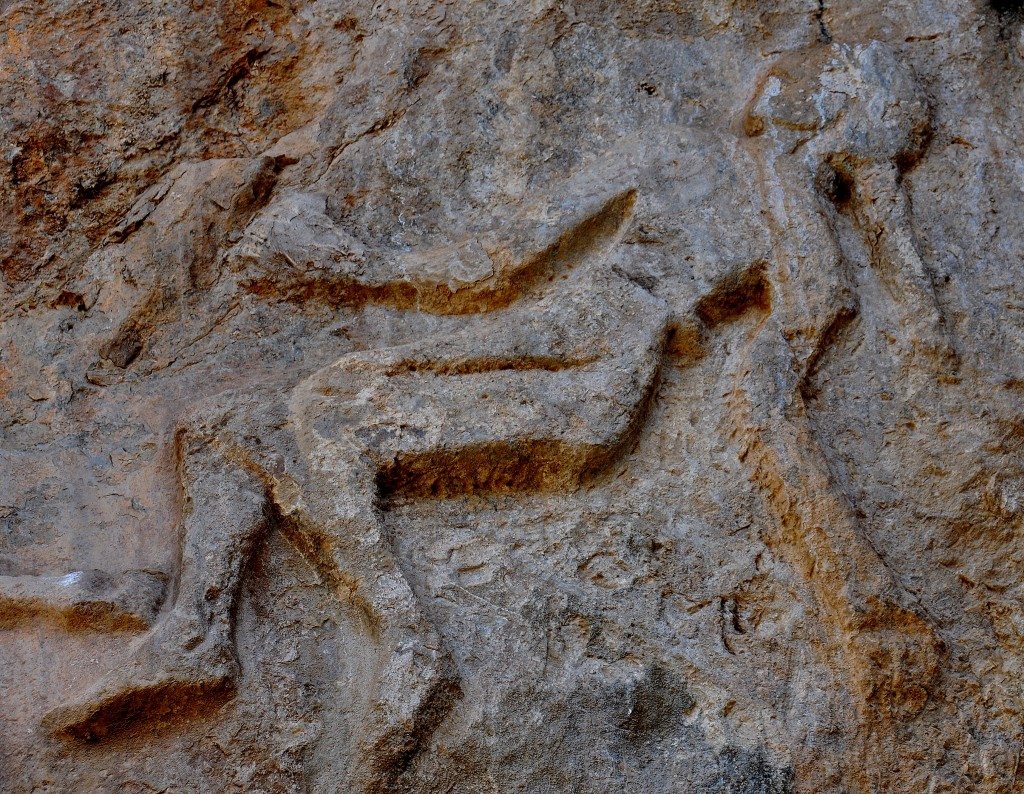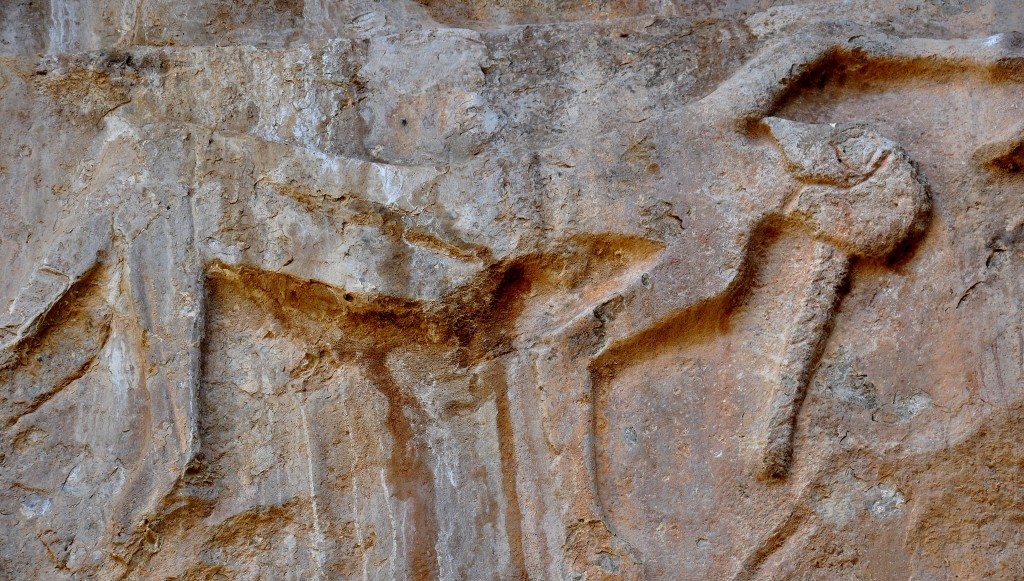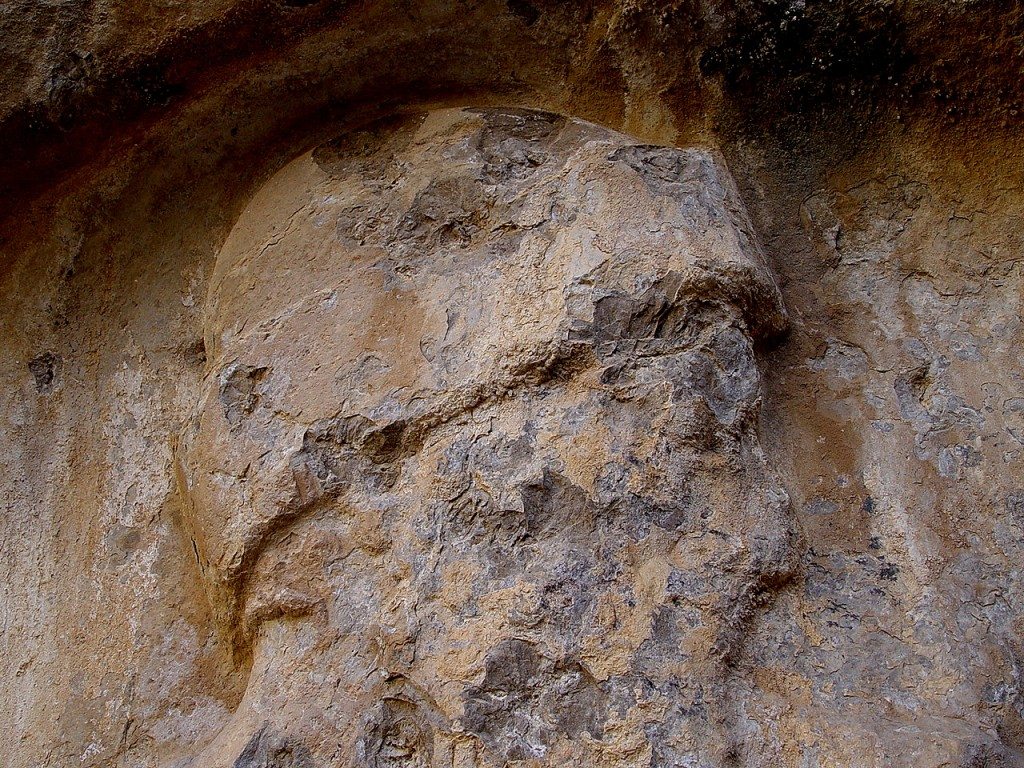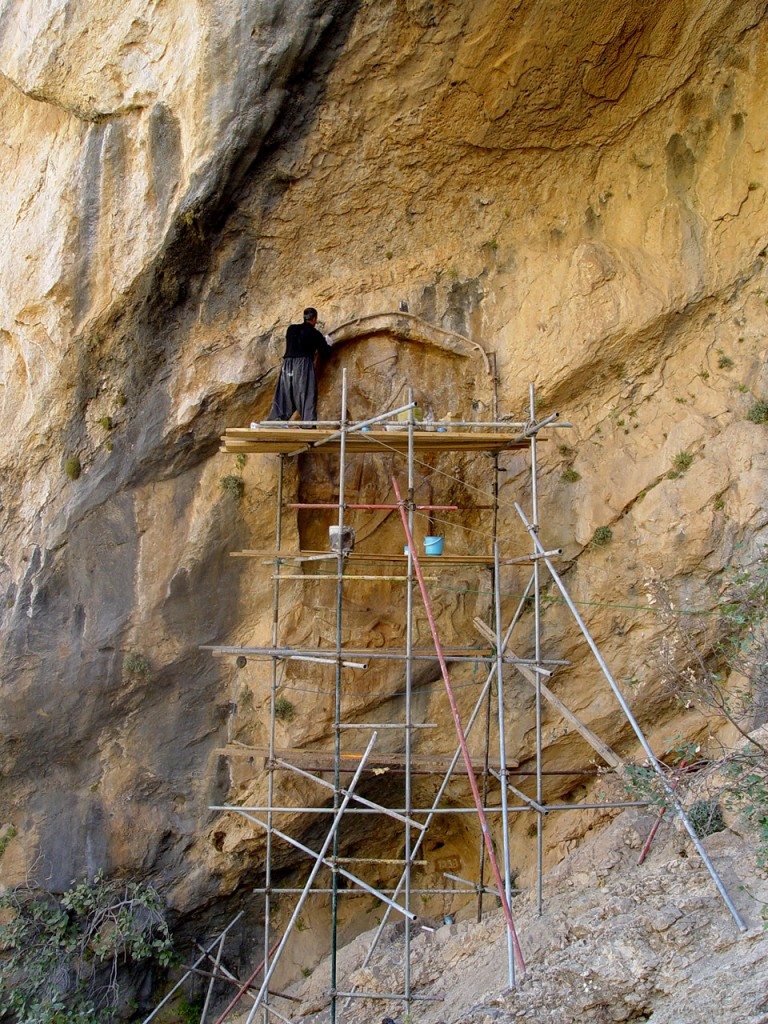I was chatting with my uncle about the archaeological reliefs in the Governorate of Sulaymaniyah. The Governorate is part of Iraqi Kurdistan and is about 400 km north-west of Baghdad. He said that he saw a relief in the year 1985 on a top of a mountain, south-west of the city of Sulaymaniyah. The name of the relief, as the local villagers call it, is Naram-Sin (Arabic: نارام سين ; Kurdish: نيرام سن). This happens to also be the name Sargon the Great‘s grandson; Naram-Sin of Akkad (reigned 2261-2224 BCE). Interesting!
Ok, let’s go. I drove my car and in about 2 hours, I reached the area my uncle had talked about (there is a road from the main street up to the top of the mountain, which was made by the local government). After that, I had to use my feet. From the top of the mountain, I descended down into a valley-like crevice. It is not that dangerous if you are familiar with hiking. Finally, there you are!
The dead silence of the mountain top, together with the wind and the sound of the tree branches, make you feel the history and smell its 4000 years’ scent.
The rock relief lies on the cliff side of Darband-i-Gawr (which means the pass of the pagan). This pass is part of the south-eastern side of the Qara Dagh (also written Kara Dagh) mountain range. Qara Dagh is a Turkish term which means the “black mountain.” It is a double range of cretaceous limestone, reaching a height of more than 1,700 meters above sea level.
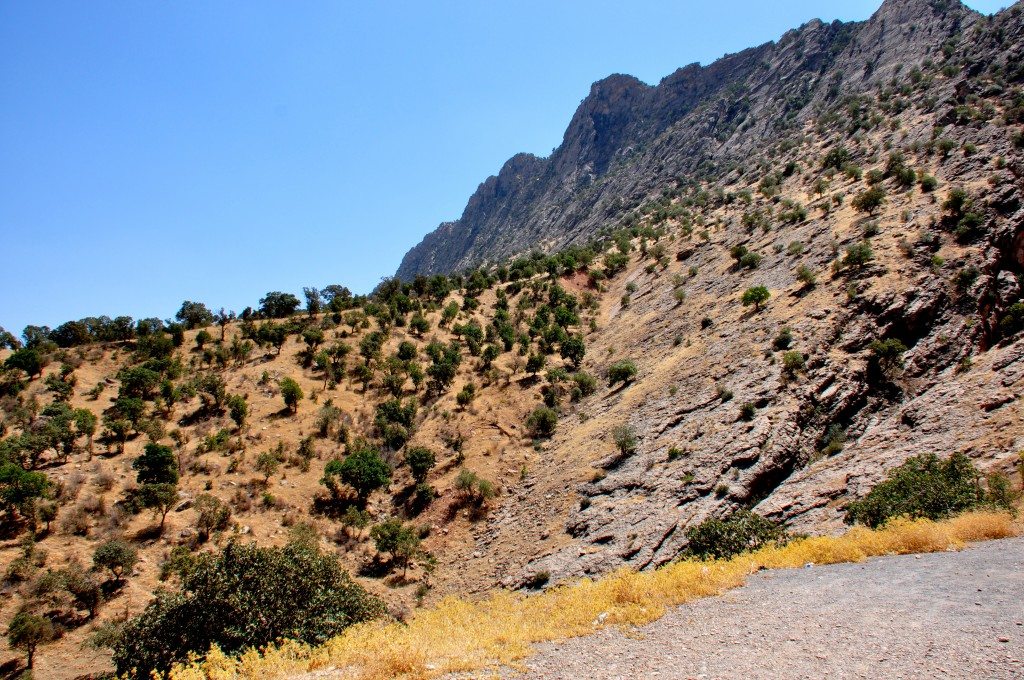
This is where the road ends. I had to descend through this crevice (on the right of the viewer) which leads to a valley within the mountain top, Darband-i-Gawr. Photo © Osama S. M. Amin.
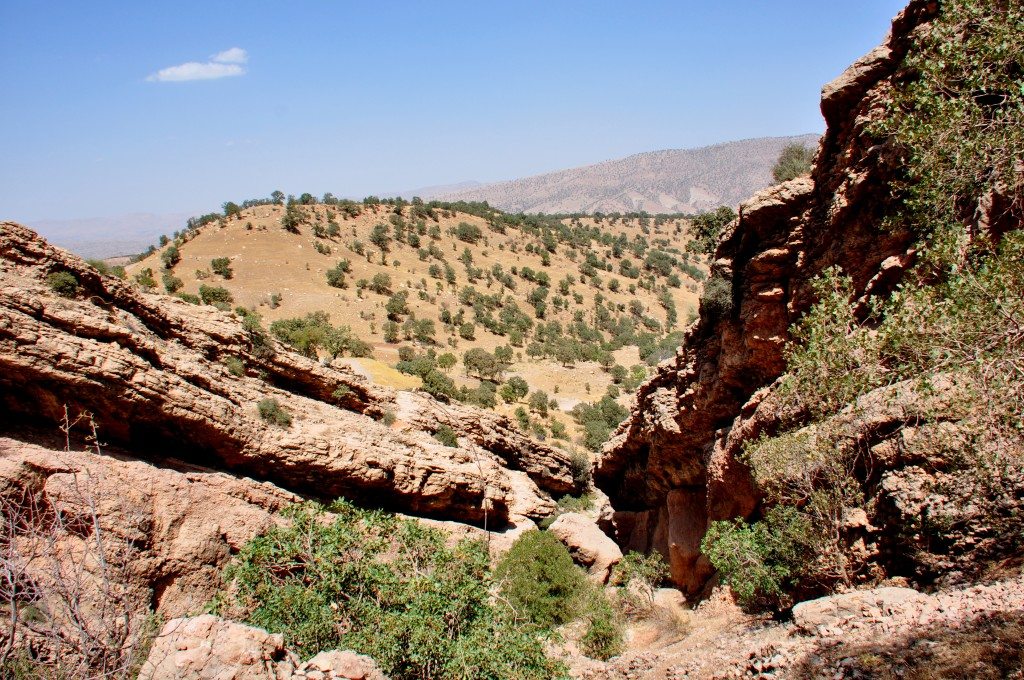
After entering into Darband-i-Gawr, I ascended again. I’m facing backward, from where I came. Photo © Osama S. M. Amin.
The Sulaymaniyah Antiquities Directorate and the Sulaymaniyah Museum did extensive restoration work on the relief in 2006, which was in a very bad condition because of weathering and deliberate vandalism. Several people shot the relief with bullets, especially the head of the warrior; local villagers believed that this relief represented a god (from this, the term the “pass of the pagan” was derived). Others shot him just for fun. My uncle told me that one of his colleagues said that he was very successful in shooting the eye of the warrior, precisely!
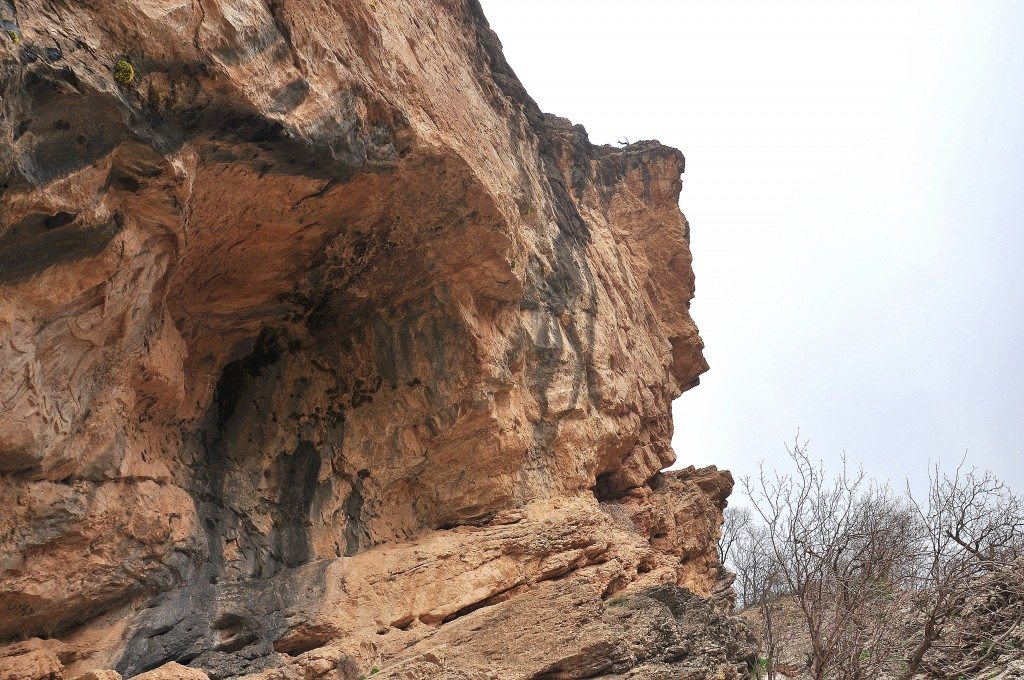
Finally, I found you! The rock-relief (on the left of the viewer), on the cliff side of the mountain’s top. Photo © Osama S. M. Amin.
The relief was carved on the surface of the cliff. Therefore, the relief appears convex-concave, from above downward. It is about 3 meters in height.
The relief shows a victorious warrior standing on the corpses of two enemies. The warrior wears a rolled up and rounded cap (similar to the ones which were used by the Ur III kings). The cap fits the head and covers the skull from the frontal to the occipital areas. Only the lower parts of the forehead, external ear, and hair behind the ear appear. The face looks to the left side (of the body) and the right eye appears widely open; there is no eyebrow. The nose is small but convex and its tip is pointed.
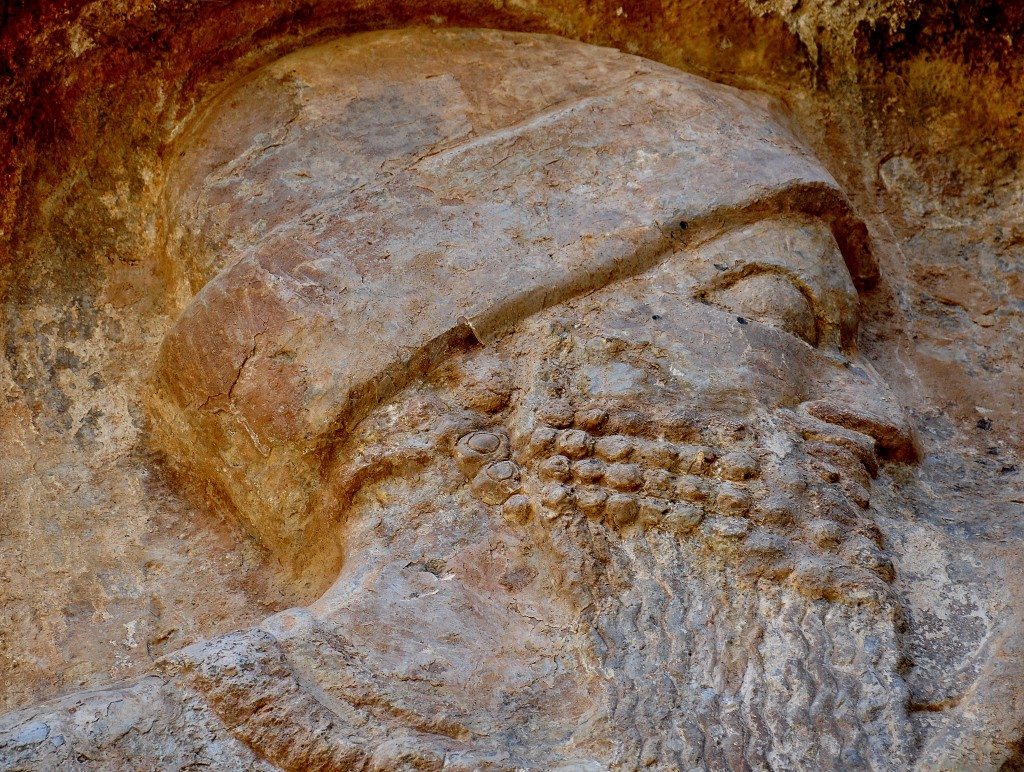
A close-up view of the head of the main figure of the relief. Note the rolled up cap which fits the head as well as the curly beard. Part of the right half of the necklace appears. Photo © Osama S. M. Amin.
The beard hair is curled and is prominently highlighted (similar to the neo-Assyrian sculptures). Below the lower jaw, the beard extends in curvy lines downwards on the chest wall to the level of the nipples. The warrior wears a beaded necklace and two bracelets. The body above the waist is bare. The muscles of the chest wall, shoulder, and upper arms had a bodybuilder contour; the impression of great power you will notice!
The right arm holds an axe (or mace) while the left one holds a bow. The bow is more or less triangular in shape (not a composite bow, though) and differs from the bow which was depicted on the Victory Stela of Naram-Sin at the Louvre museum in Paris.
The warrior wears a knee-length kilt. The waist is narrow and there is a multi-layered belt around the mid-abdomen; one end of the belt hangs down on the right thigh.
The right leg is straight and extended, and its foot presses (not directly) on an enemy corpse. The left leg is flexed at the knee and is lifted off the ground as if the warrior is about to ascend something. The left foot also sits on an enemy corpse. The enemies were depicted much smaller in size when compared with the main warrior figure (similar to the ones seen on the Victory Stela of Naram-Sin). The enemies have ponytails and lie flaccid on the ground (they are dead already!). The overall depiction of the enemy corpses is very similar to those seen on the Victory Stela of Naram-Sin.
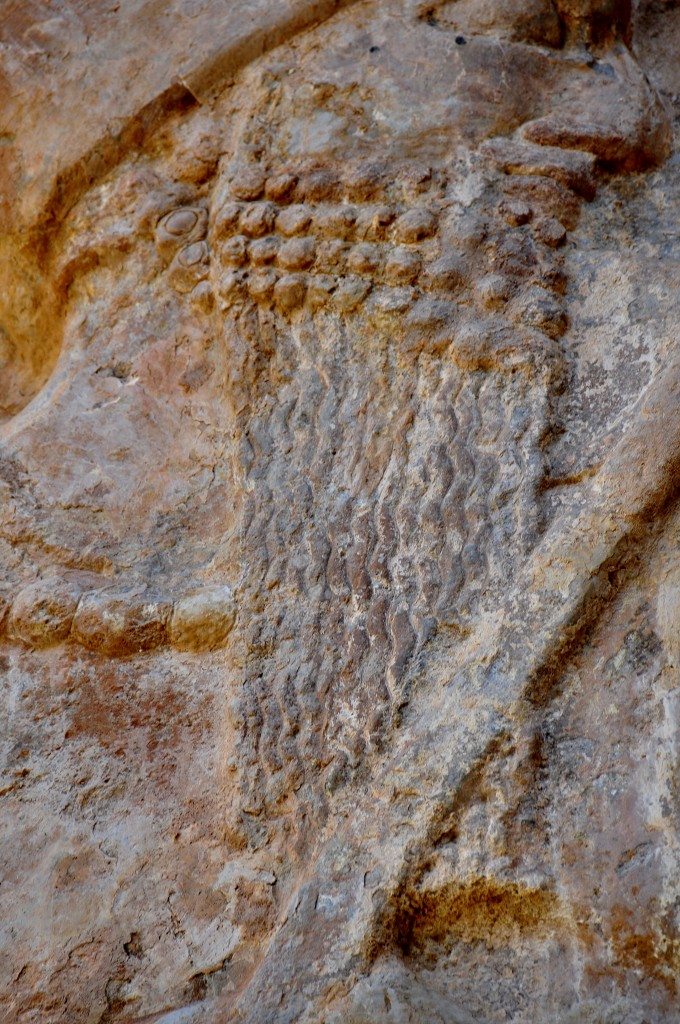
The man’s beard is long and curvy and falls downward behind the bow to the lower chest. Photo © Osama S. M. Amin.
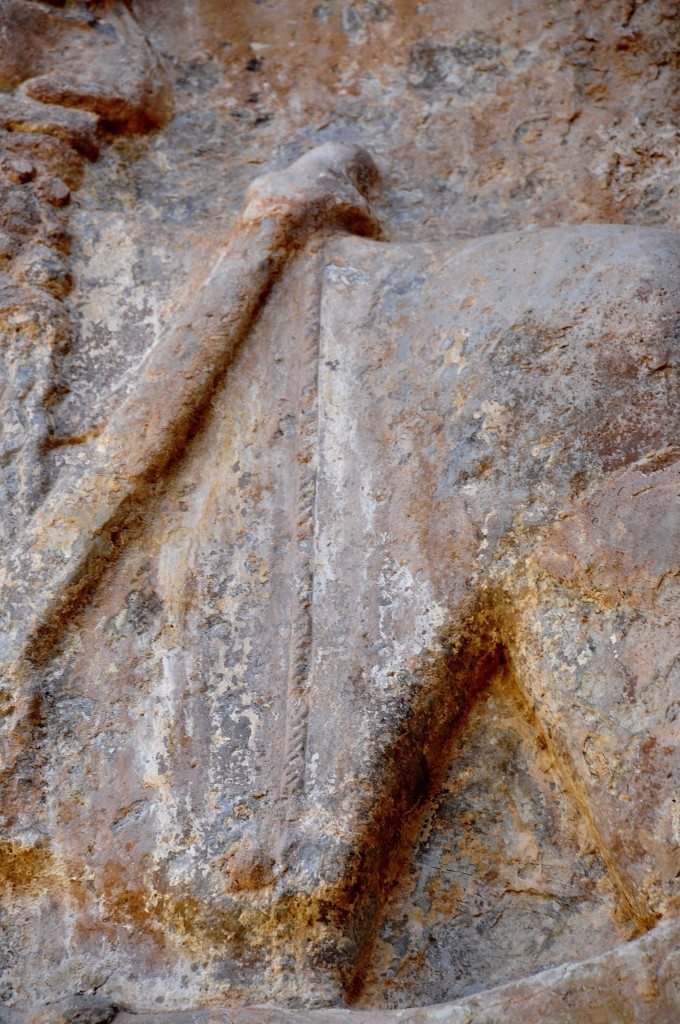
The left shoulder’s deltoid muscle is prominent. The string of the bow appears clearly. Photo © Osama S. M. Amin.
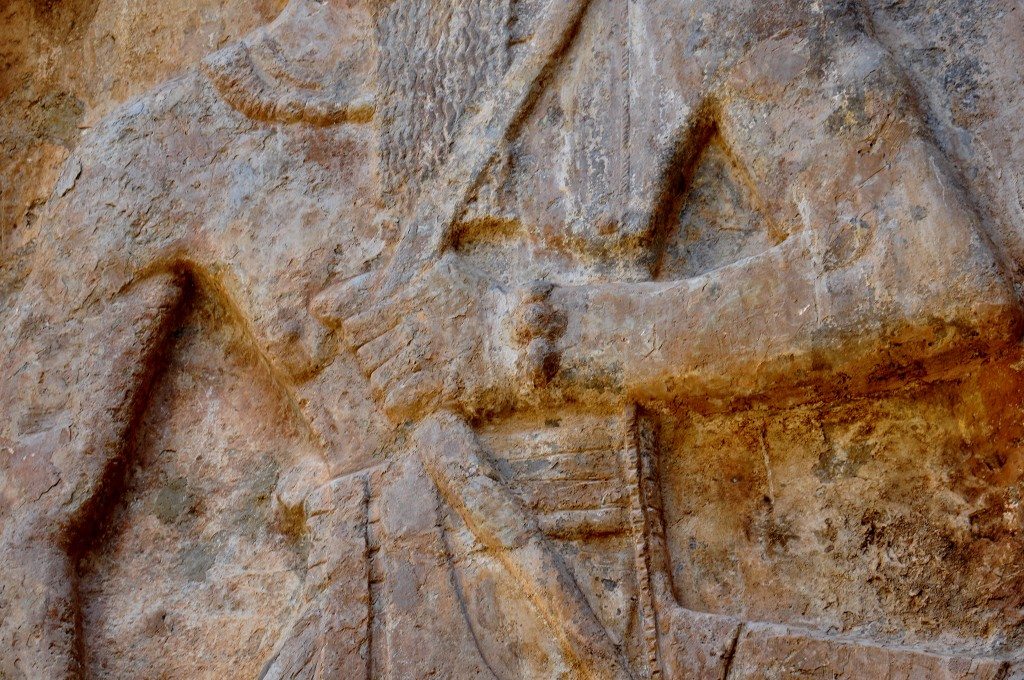
The mid-view of the warrior. The picture speaks clearly on behalf of the sculpture! Photo © Osama S. M. Amin.
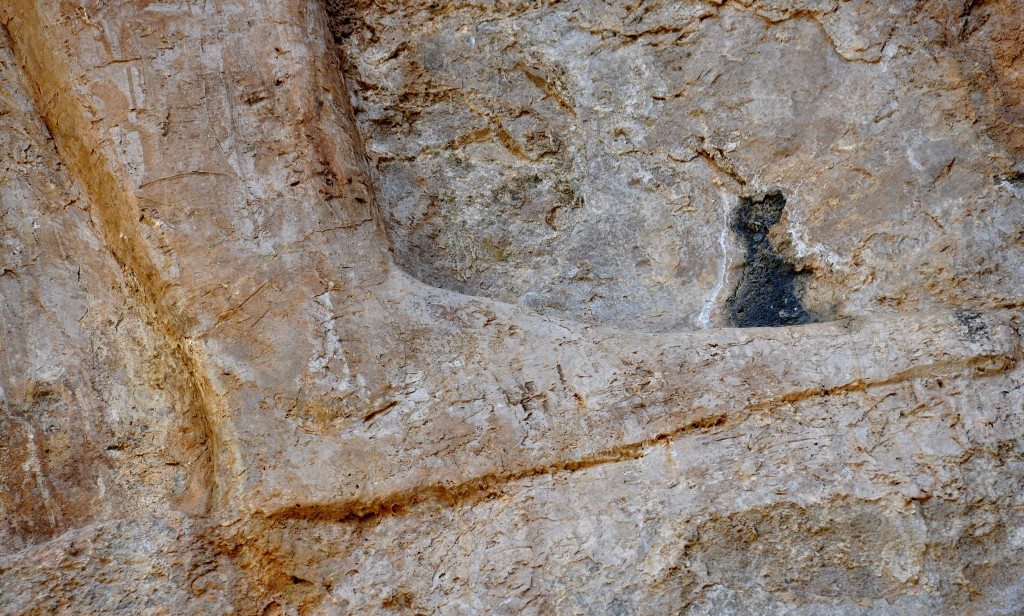
The left foot of the warrior. It is not obvious whether he wears a sandal or not, and I have not seen any toes. Photo © Osama S. M. Amin.
During the restoration work, a new, thin umbrella-like layer of gypsum was added above the upper margin of the relief, in order to protect it from falling water. This layer was not present previously. The original details of the warrior and the dead enemies were restored based on an old photo of the relief in the Sulaymaniyah Museum.
Mr. Akam Omar, a sculptor at the Sulaymaniyah Museum who participated in the restoration work in 2006, told me that after removing around 3 cm of overlying debris, they found a black pigment. This pigment, according to Mr. Akam, was painting on some of the background of the relief to highlight the contrasts, because the relief lies on a cliff side where the sun-rays barely reach it (the relief is in the shadow, most of the day). In this way, the viewer can recognize the main details of the warrior.
Who is the victorious warrior depicted on this relief? The overall scene looks like that of the Victory Stela of Naram-Sin which shows his successful military campaign against the Lullubi and their king Satuni; local villagers don’t (and didn’t) know this stela! Why have they been calling this relief “Naram-Sin” since centuries? The Lullubi were tribes living at Zamua area, modern-day Zagros Mountains of the Iraq-Iran border.
Some scholars think that this man is Anobanini (or Anu Banini) because of great similarity in the overall depiction of the attitude, clothes, bow, and posture of that king’s relief in Sar-e Pole Zahab (modern-day Western Iran). Another theory suggests that this is a Neo-Sumerian king (from Ur III era); it is well-known that the Neo-Sumerians had campaigned the Lullubi land nine times.
Mr. Hashim Hama Abdullah, Director of the Sulaymaniyah Museum, and Mr. Kamal Rashid, Director of the Sulaymaniyah Antiquities Directorate, told me that most likely this man represents a local ruler or king of what is known today as Iraqi Kurdistan. In addition, it seems likely that the relief originally contained some cuneiform inscriptions but they were erased (through weathering or deliberately).
I stood and sat in front of the relief for about an hour, asking myself several questions. Who was the artist who sculpted this relief and how? Who saw this relief over these 4000 years? I should stress the fact that it is not an easily accessible area: it is like a valley inside a mountain top!
The unknown sculptor/artist was successful in creating this scene of a warrior in a dramatic stance. The dead silence of the mountain top, together with the wind and the sound of the tree branches, make you feel the history and smell its 4000 years’ scent. Once you see the relief, it is impossible to forget the tremendous vitality the sculptor gave to his great work!
Special thanks go to Mr. Akam Omar, a sculptor at the Sulaymaniyah Museum, who had kindly provided me with some pictures of the relief during its restoration work in 2006.
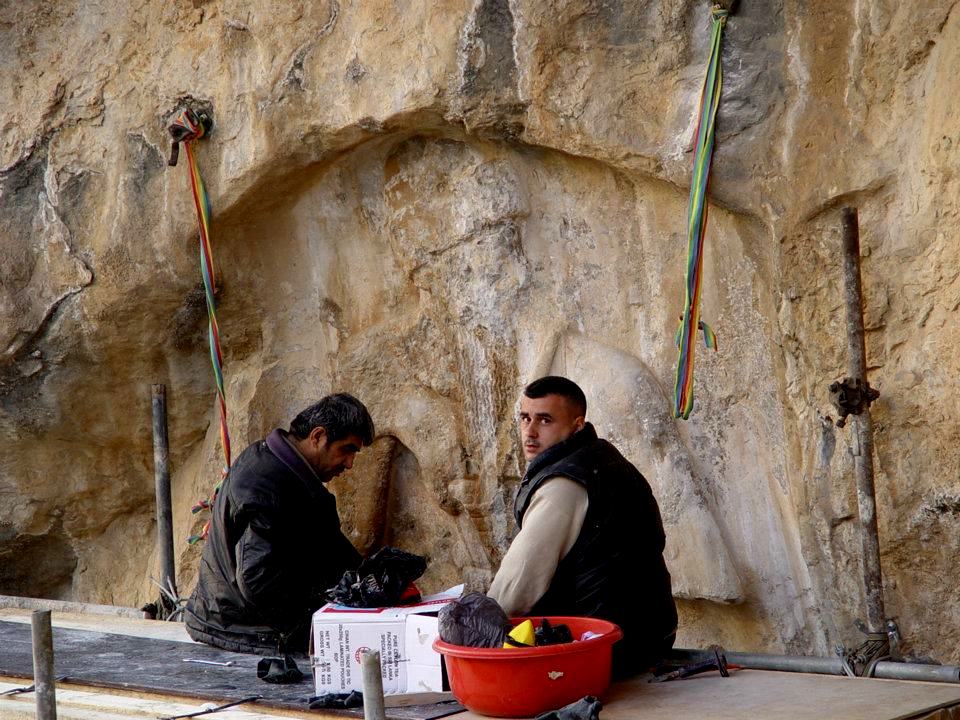
Part of the restoration team, working on the relief in 2006 (Mr. Akam is on the left of the viewer). Note the bullet marks on the warrior’s head! Photo courtesy, Akam Omar.
